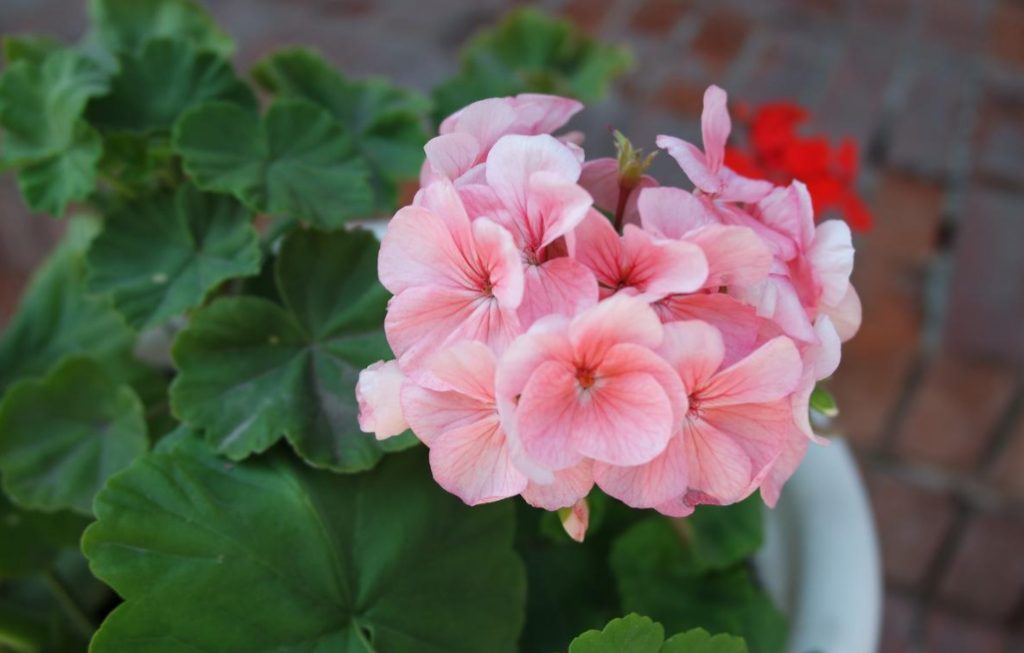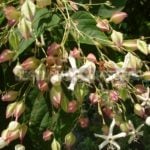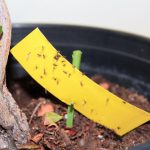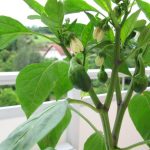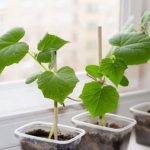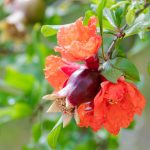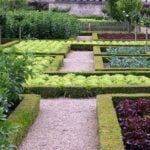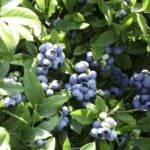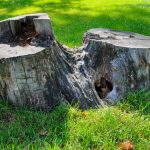What do you know about pelargonium? Yes, yes, about the very pelargonium, which is often called geranium. About the one that from ancient times, decorating the windows of our grandmothers, grew in chipped bowls in the ground, like cement, and bloomed at the same time luxuriantly and brightly.
Do you know that pelargonium is white, pink and red? So I thought the same thing a little while ago, and I knew that pelargonium would never be in my house. The bitter smell of its leaves seemed very tasteless to me.
Perhaps to this day I would not have changed my attitude towards them if I had not once happened to get into the garden of elderly dahlia fans. They asked to take photos for a local exhibition. Armed with a camera, I went to shoot dahlias. They have a small plot, four hundred acres of land. Not a single bed is there – all dahlias, and on the high veranda in funny old pots, hanging no less than a meter and a half, a solid wall of colorful ivy-leaved pelargoniums grew.
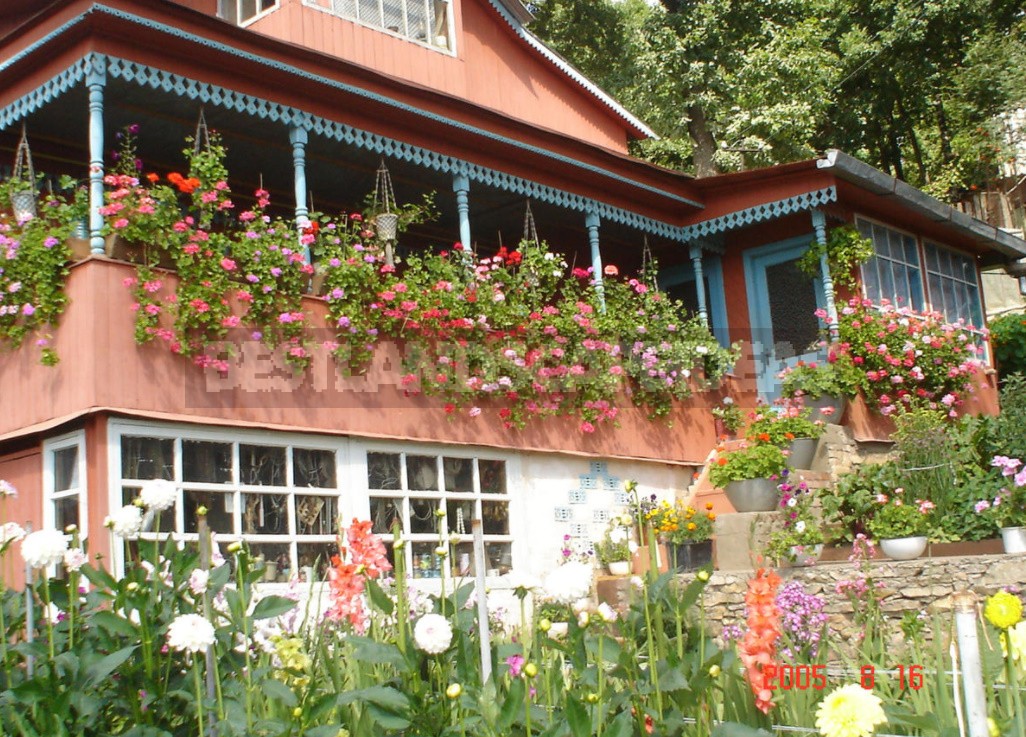
I caught my breath with delight, such beauty I had only seen in pictures in magazines. And it turned out that the foliage of this species does not smell at all. It was then that the firm decision never to keep pelargonium in the house lost its firmness.
I was embarrassed to ask for a cut from elderly flower growers, and I understood that these plants are not for windows, they are for balconies and verandas, and I do not have either. Still not knowing that this is possible, I began to look for something similar, but compact, so that you can keep it on the window in the apartment.
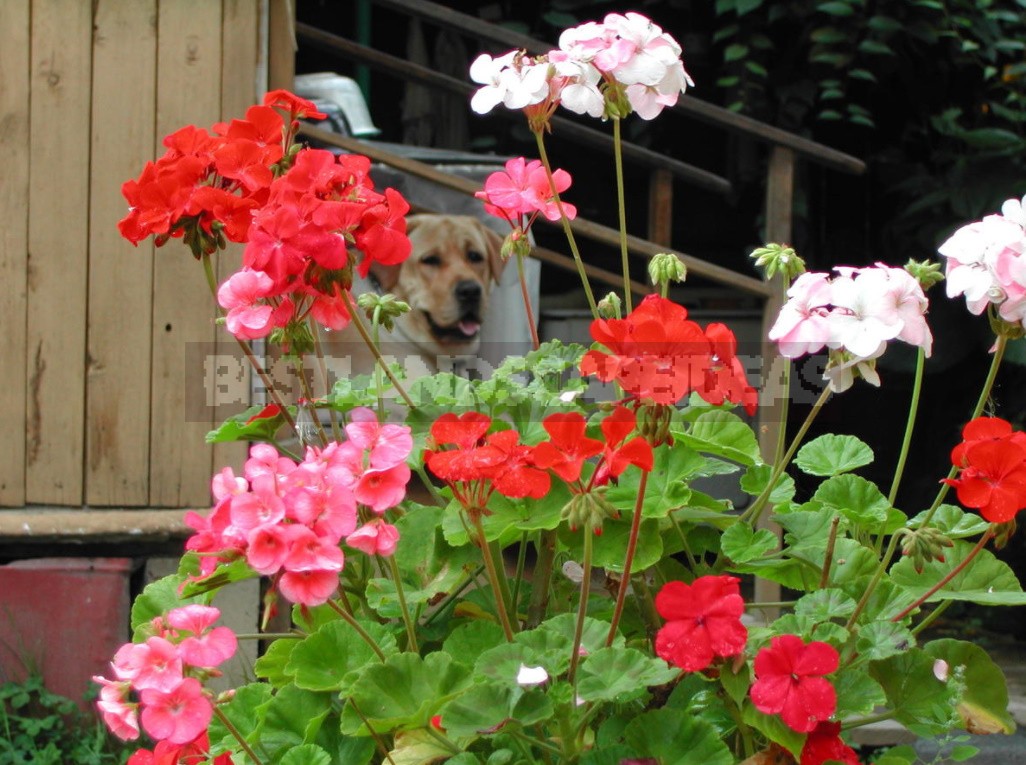
Very soon on the Internet I found a virtual club of pelargonium lovers. This is a community of passionate people, fans of an amazing plant that has won my heart once and for all. These people do a lot to promote pelargoniums, they have created a catalog of species and varieties that are in private collections, they are happy to share observations about all aspects of pelargonium life, collect information about these plants bit by bit, and hold exhibitions.
It was there that I learned how diverse pelargoniums can be – from modest species forms to decorative luxurious bushes studded with large inflorescences. It was there that I found the plant of my dreams. Now I have about 200 varieties and species of pelargonium in my collection, and the bitter smell of foliage no longer seems unpleasant to me.
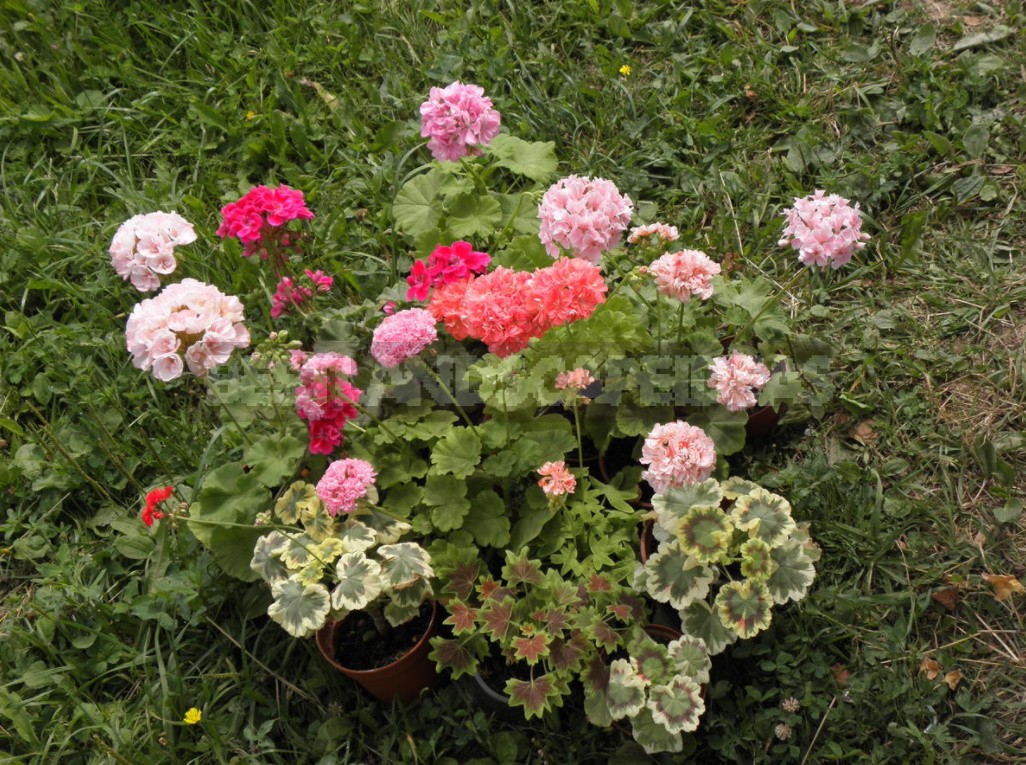
Do you want to know a little more about this amazing plant? Then let me offer you a brief classification of pelargoniums that can be found in collections.
Species of pelargonium
Pelargoniums, which are found in nature in the wild. About 200 species of this plant are found in places of its growth in southern Africa, in the Cape province. First of all, they are interesting because without them there would be none of the modern variety. Some of the species pelargoniums can be grown quite easily in the conditions of apartments.
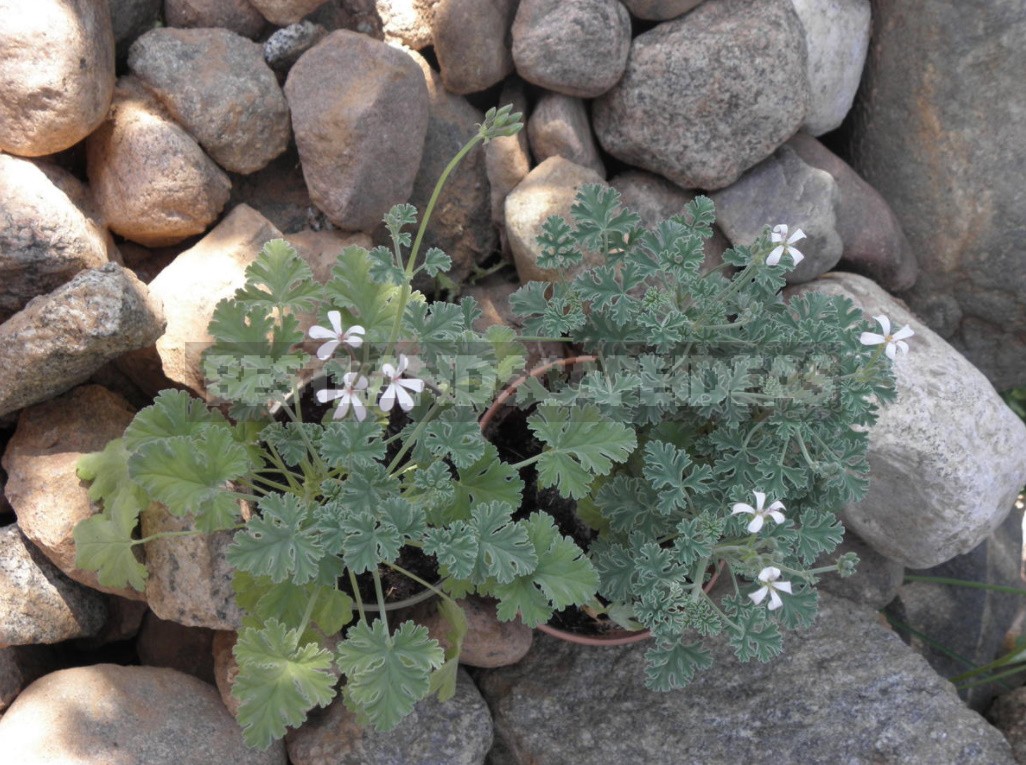
Pelargoniums of this group amaze flower growers with an amazing variety of forms. They are so different that it is impossible to believe that they belong to the same genus. Among them you can find plants with caudex trunks, similar to bonsai; plants with leaves, rather like carrots; with flowers, similar to exotic insects.
Fragrant pelargoniums
These are hybrids of pelargonium species. They are grown for the beautiful carved foliage and pleasant aromas that the leaves emit. In the collections you can find flowers with the smell of lemon and mint, rose and pineapple, with perfume and confectionery smells, with the smell of cinnamon and apple, lilac and coconut, with resin forest aromas.
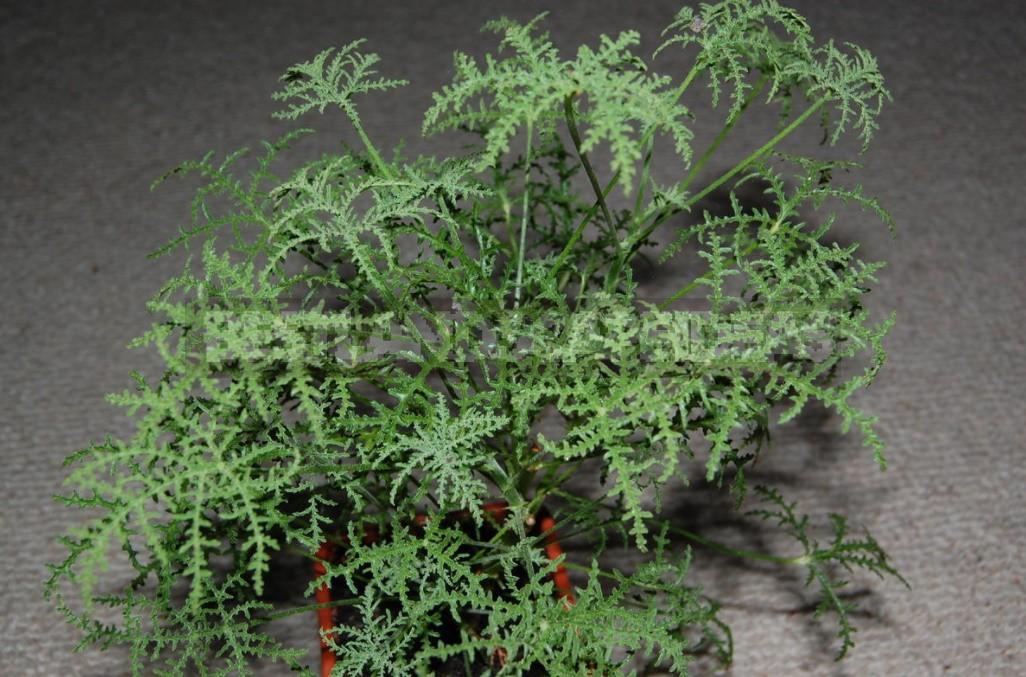
It is generally believed that fragrant pelargoniums have simple and uninteresting flowers, but this is not so, there are many varieties of fragrant pelargoniums with large and beautiful flowers.
Pelargonium grandiflorum
Shrub-like plants with large, diverse flowers in color. these are the same pelargoniums that we often see on the shelves — potted plants brought from holland. But we see only industrial varieties, in fact, there are much more of them. These are pelargoniums with huge flowers decorated with ruffles and flounces, similar to romantic ball gowns of beauties of the XIX century.
Pelargonium Angeleyes
Bushy or ampelny plants with charming numerous small flowers, somewhat resembling the flowers of pelargonium grandiflorum.
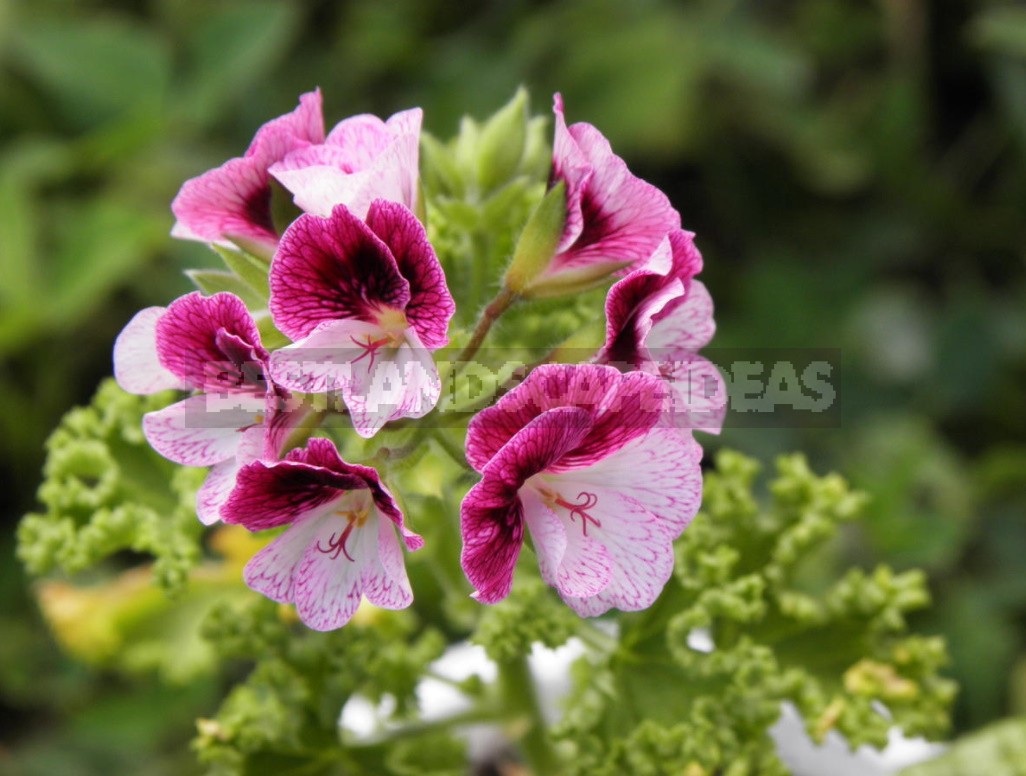
Medium-sized flowers of plants of this group are two-tone. A spectacular combination of purple, purple or pink with white gives the bush a particularly elegant look.
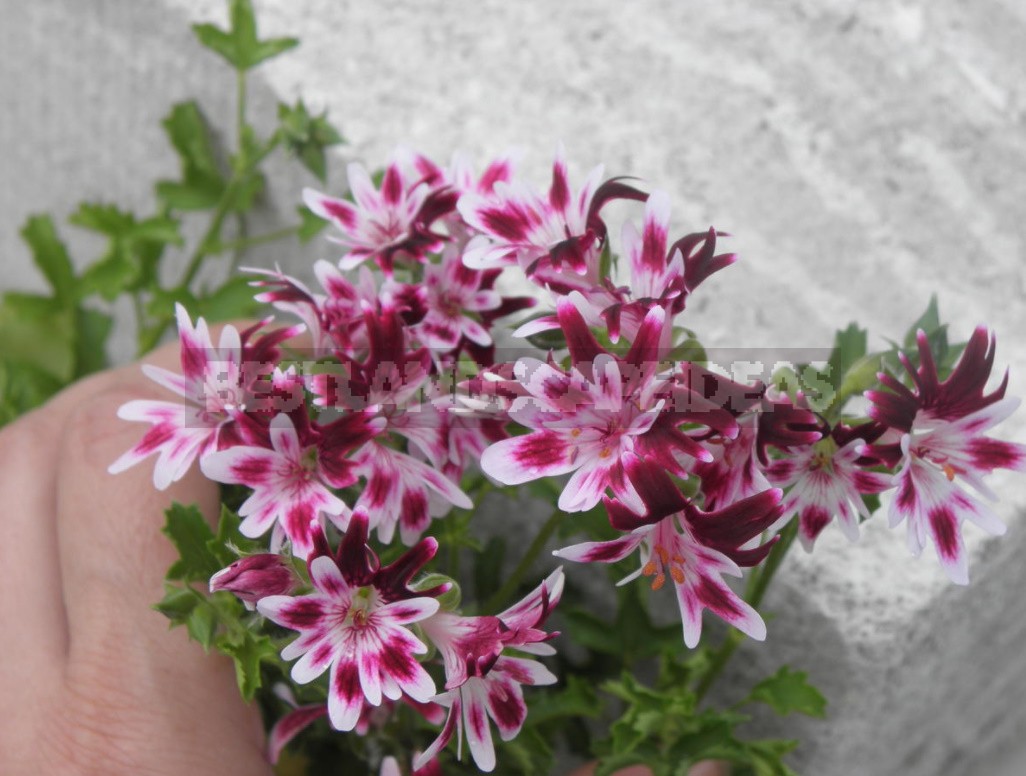
Many varieties have fragrant leaves and bloom beautifully all summer.
Pelargonium peltatum
A basket of pelargonium, with flowers of various forms and colors. Small dense leathery leaves really resemble ivy.
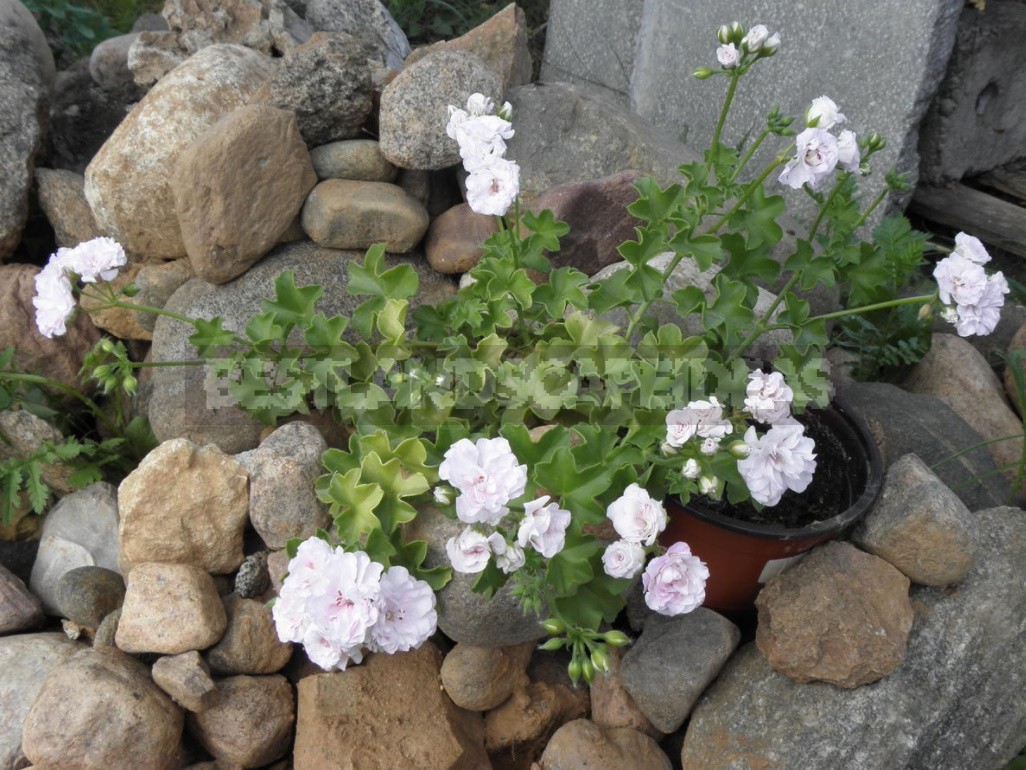
These plants are absolutely indispensable for landscaping the balcony.
Zonal pelargoniums
The most famous group of pelargoniums with brightly colored flowers and rounded leaves with a clearly defined band-zone. This group includes many different types, differing in the shape of growth and color of flowers.
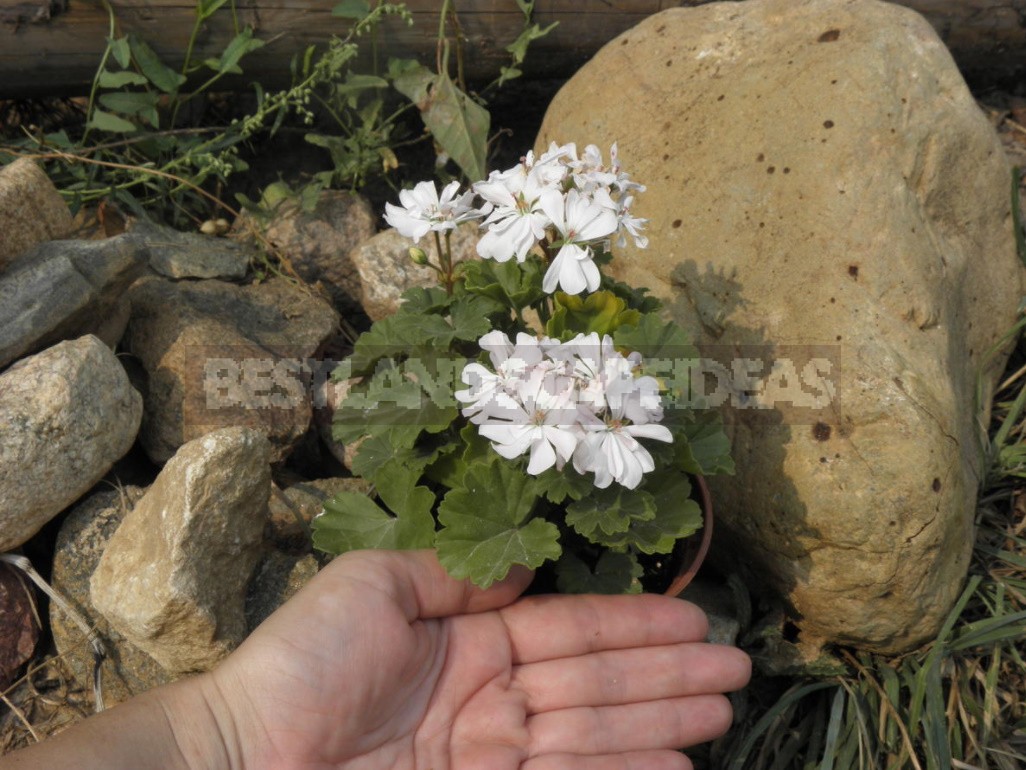
According to the form of growth, there are standard, dwarf and miniature pelargoniums.
The shape of the flowers is distinguished by rosebuton, tulip-shaped, carnation, cactus and star-shaped pelargoniums.
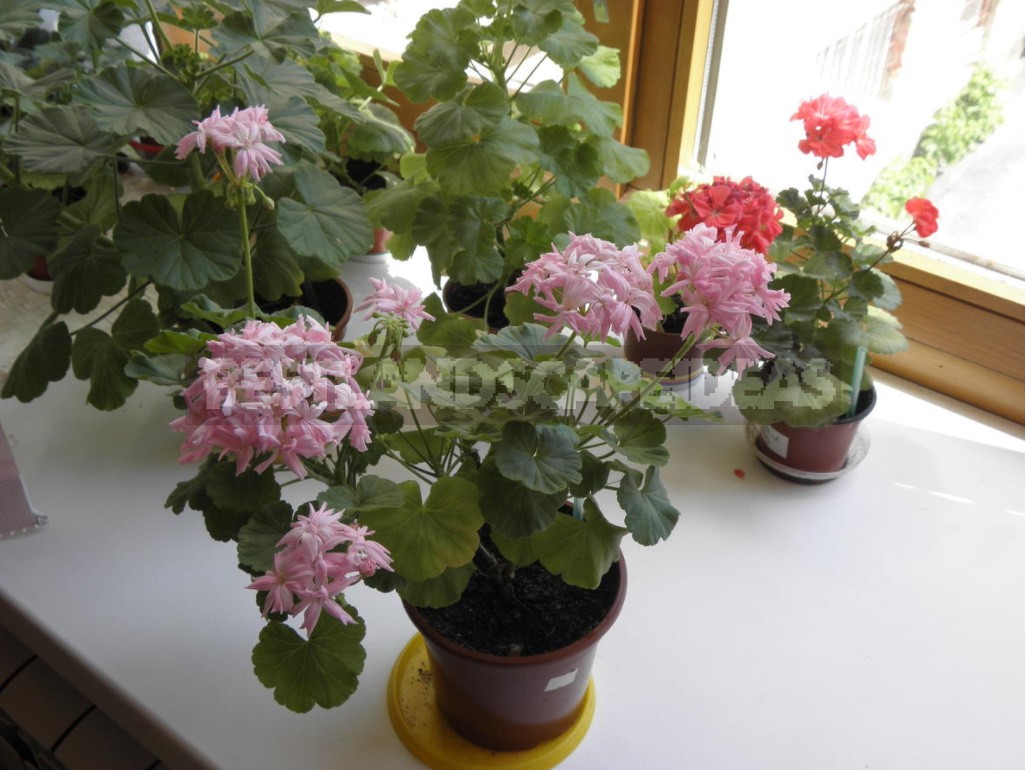
The flowers of Zonal pelargoniums have a variety of colors, they can be monophonic and two-colored; with a border on the edge or with contrasting spots on the petals (phlox), with a scattering of small colored splashes (speckled), with small contrasting spots and dots in the center of each petal (bird eggs).
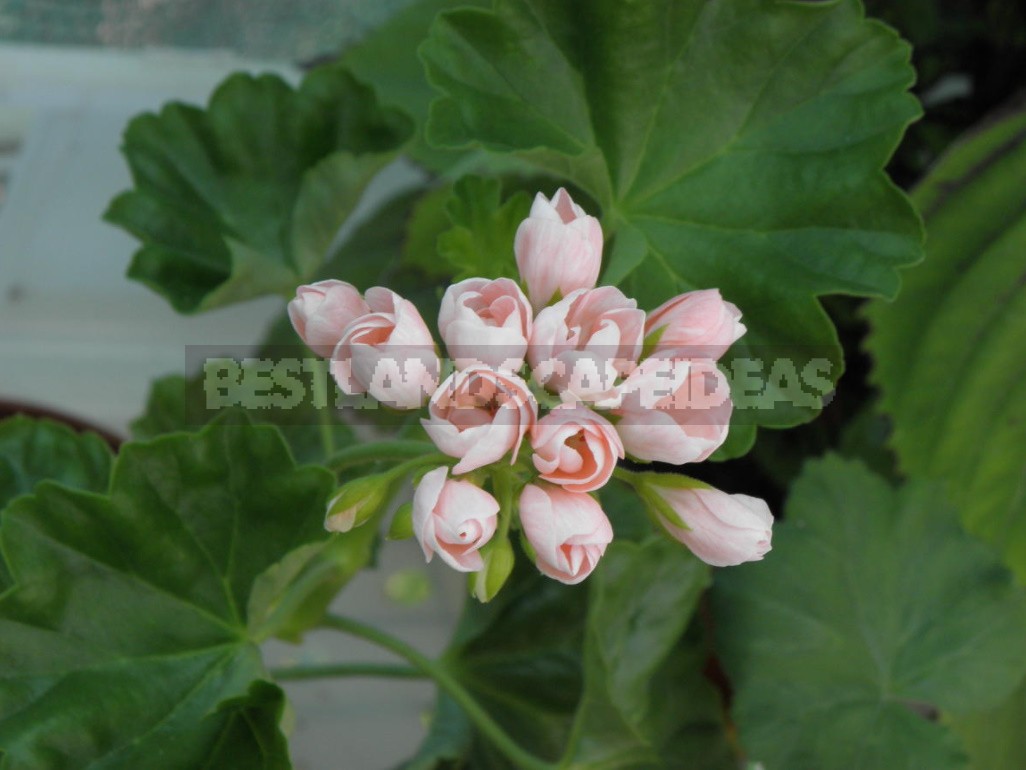
The color of the leaves of Zonal pelargoniums is also very interesting. They can be painted in two or three basic colors in various combinations of green, white, yellow, brown, red and even almost black shades.
You see how diverse they are – pelargoniums! Everyone can find a plant for themselves in this variety.
- Lovers of exotic plants will definitely find it among the alien-like species.
- Adherents of aromatherapy will meet their pelargonium among the scented ones.
- If you live all summer in the country, you just need Pelargonium grandiflorum, Pelargonium peltatum and standard Zonal pelargoniums — they will decorate your garden.
- Do you spend all summer in the city? Your balcony and windowsill can also be decorated with miniature pelargoniums.
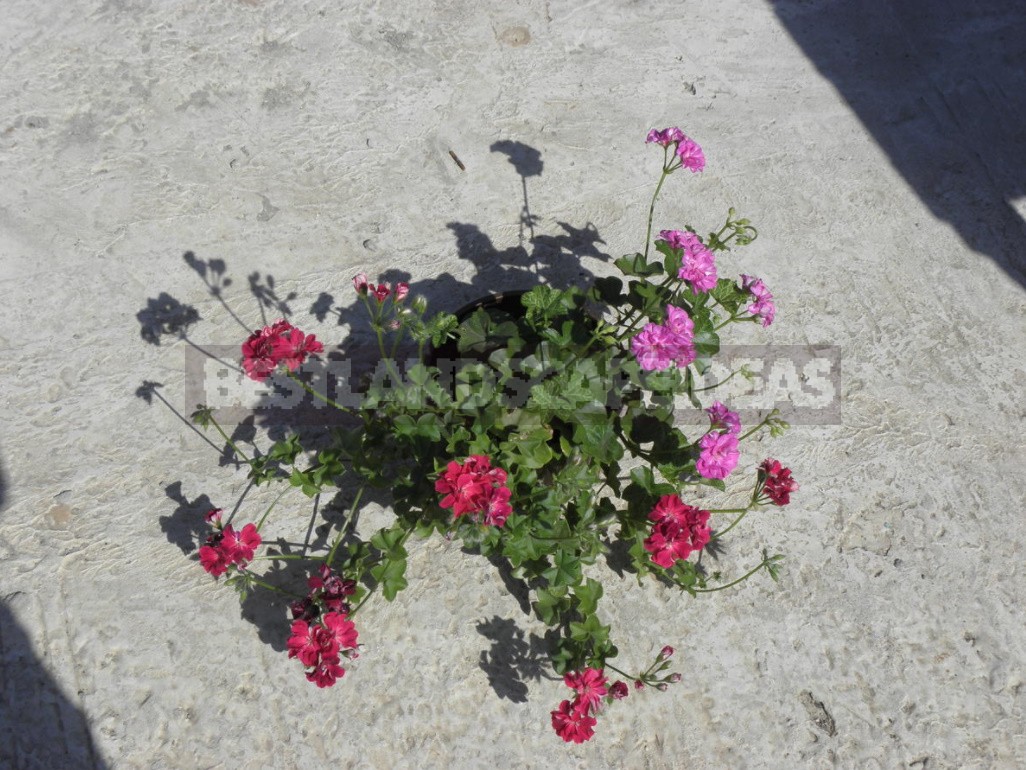
How to grow pelargoniums
Another argument in favor of this culture – almost all types of pelargoniums are easy to care for. They are quite undemanding to the composition of the soil mixture. The most common recipe for a soil mixture for pelargoniums is as follows:
- 3 parts of purchased peat-based soil,
- 1 part coarse sand,
- 1 part of loamy garden land.
Care will not be difficult, the main thing is to remember and follow the rule: do not pour! Pelargonium does not like heavy watering and stagnation of water in the pan. Watering should be regular, but moderate.
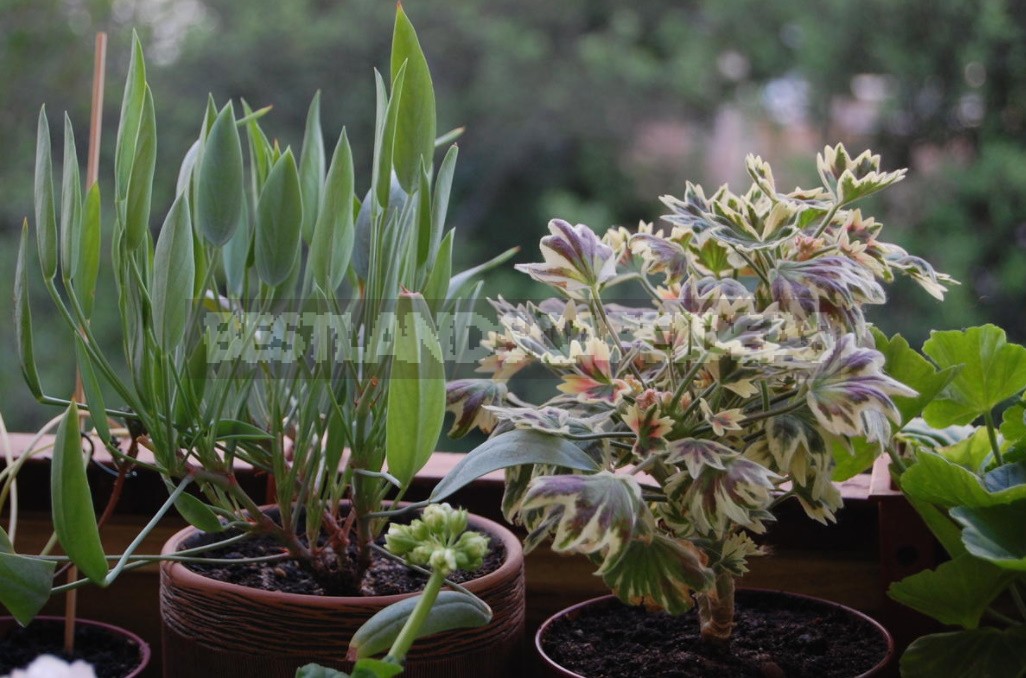
If I have convinced you, and you have already decided that in the spring you will get a rooted stalk of zonal pelargonium, then wait until it grows to 5-7 cm, transplant it into a pot 8-9 cm in diameter and pinch the top of the head. Dwarf and miniature varieties do not require careful shaping, as they themselves are easily bushed and form a dense crown. Standard pelargonium after a while will need to be transplanted again in a pot with a diameter of 11-12 cm.
When the first buds begin to appear, you need to feed the plant with a fertilizer with a high content of potassium (any fertilizer for tomatoes or potassium nitrate is suitable), alternating it with a full complex. By keeping the pelargonium “in good shape” with top dressing, you can achieve continuous flowering from spring to late autumn, and by providing illumination with fluorescent lamps, you will help it bloom even in winter.
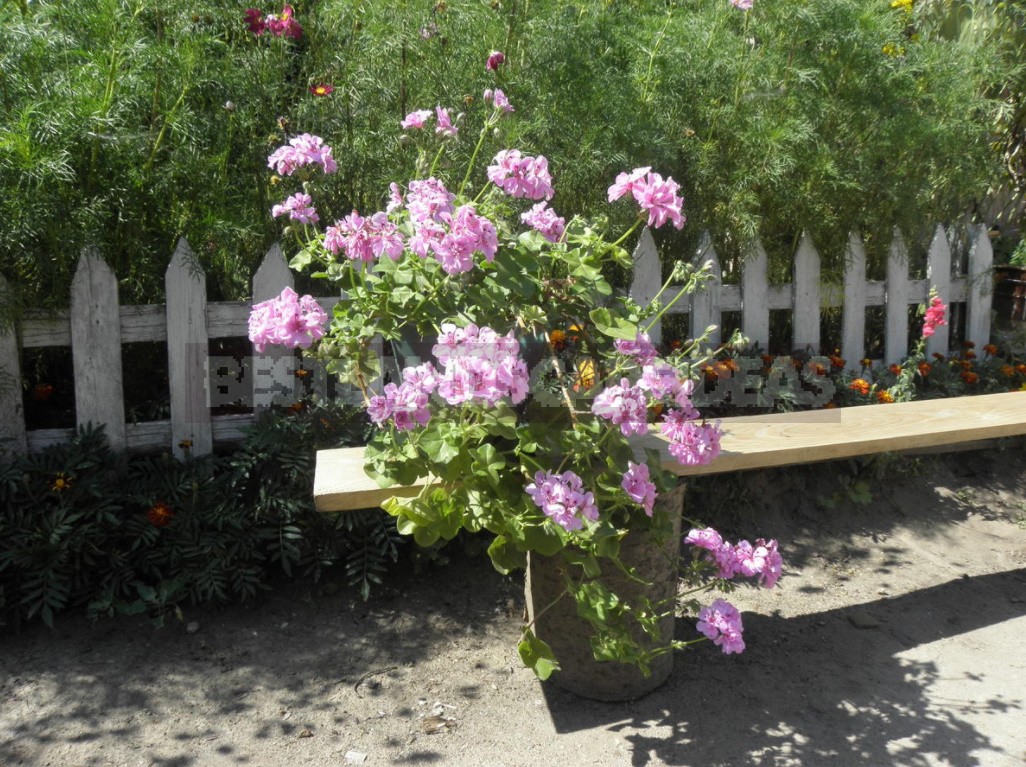
Invite pelargonium to your home. When it’s a wet autumn or a cold winter, when you lack bright flowers, the smells of the garden, when you risk falling into autumn hibernation, you can help out the now fashionable, but so old and familiar to us from childhood plant – pelargonium.
